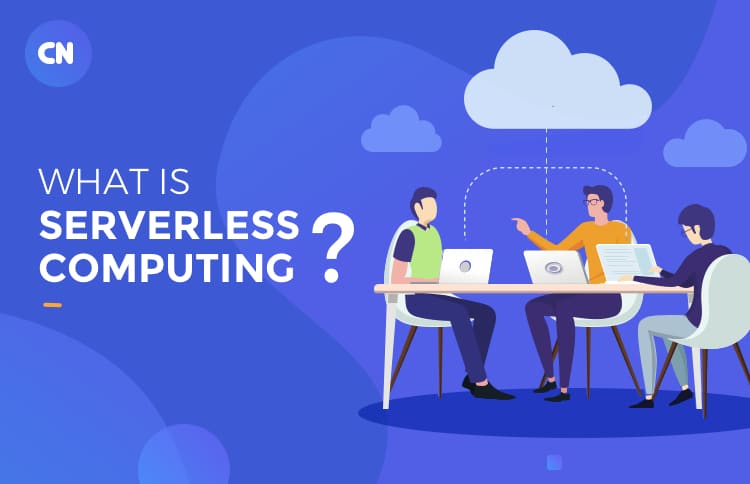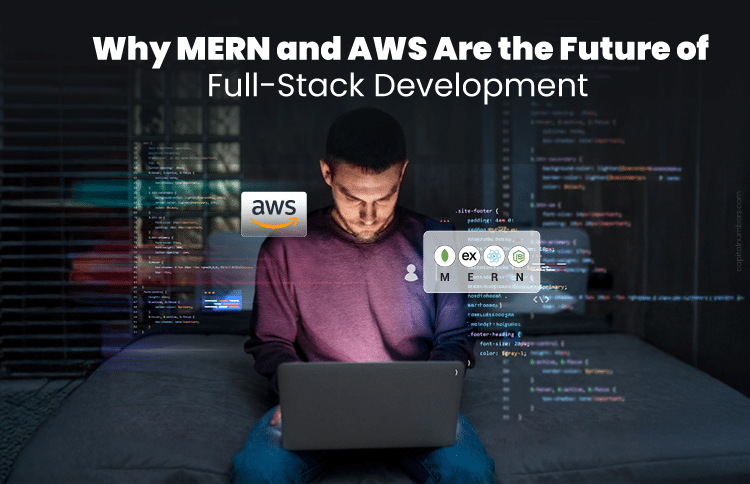What Is Serverless Computing?
Table of Contents
Have you ever wondered how some apps handle sudden user spikes without affecting anything? Well, the secret lies in serverless computing. In today’s tech-driven world, businesses always search for flexible and efficient solutions to meet growing demands. Serverless computing lets them handle these challenges seamlessly by automatically scaling resources to match demand, ensuring smooth performance without extra effort.
Serverless computing is reshaping software development and cloud engineering by automating infrastructure management. It reduces costs, simplifies infrastructure management, and scales automatically with demand. This technology is ideal for real-time streaming engines, complex data systems, and many more, providing the tools for rapid, efficient innovation.
In this blog, we will discuss serverless computing in detail – its advantages, challenges, how it works, use cases, and more. We’ll also discuss what the future may hold for this transformative technology.
What Does Serverless Computing Mean?
Serverless computing is a cloud computing model that allows developers to build and run applications without worrying about managing servers. The cloud provider handles all infrastructure tasks, like scaling, maintenance, and updates. This means developers can focus on writing code and creating features, saving time and effort.
With serverless computing, resources are automatically allocated based on demand, ensuring smooth performance. It’s ideal for businesses looking to handle unpredictable workloads or scale quickly. This approach simplifies the development process and makes it easier to innovate.
How Does Serverless Computing Work?
With serverless computing, developers can build and deploy applications using small, individual functions instead of maintaining a traditional server setup. These functions are triggered by specific events, such as an API call, database query, or file upload. Developers write the code for these functions, and the cloud provider runs them on demand, ensuring efficient resource use.
The concept of Function as a Service (Faas) is the core of serverless computing. With this, developers create small, reusable pieces of code that execute in response to events. The cloud provider automatically handles the execution, scaling, and resource management.
You May Also Read: Simplifying Cloud Web Development with Serverless PHP
Advantages of Serverless Computing
Serverless computing offers various advantages, making it a great choice for modern application development. Here are some key benefits:
- Cost Efficiency:
With serverless computing, you don’t need to pay for the computer resources you are not using. Besides, you don’t need to pay anything if you’re not using it for a particular time. This means you will only pay for the computer resources you use for a specific time. So, it is a cost-effective option for you. - Scalability:
Serverless platforms automatically scale based on demand. If your app suddenly experiences increased traffic, the cloud provider will adjust resources in real-time to handle the load. You don’t need to worry about how to manage the server capacity. - Simplified Infrastructure Management:
With serverless, developers don’t need to manage servers, networking, or infrastructure. The cloud provider takes care of all these. So, developers can focus on writing code and delivering features. - Faster Time to Market:
With serverless, you will build applications using built-in cloud services. This means less setup and configuration time, which speeds up development and deployment and reduces time to market. - Increased Flexibility:
Serverless architecture allows you to build flexible, event-driven apps. You can update or add new functions easily without changing the whole system. It will make your development process more agile. - Better Reliability:
Serverless computing uses the cloud provider’s built-in backup and failover systems. This ensures your application stays available and can recover quickly from failures.
Challenges of Serverless Computing
Serverless computing is not free from challenges. Here are the five challenges that you should be aware of:
- Vendor Lock-In
Since serverless apps are tied to specific cloud providers, switching to another provider can be difficult and require major changes to your app. - Cold Start Delays
Serverless functions can have delays when they are first triggered after being idle. It can slow down performance for time-sensitive apps. - Limited Control
With serverless, you don’t control the infrastructure. This can be a problem if you need specific configurations or settings for your app. - Debugging and Monitoring Issues
Tracking and debugging issues in serverless apps can be harder as many small functions run across different environments. - Resource Limits
Serverless platforms often set limits on memory, execution time, and request size. These limits can be restrictive for larger or resource-heavy applications.
Use Cases for Serverless Computing
Serverless computing is used in various cases. Here are the common use cases of serverless computing:
Use Case 1: Web Applications
Serverless computing is a great option for building web applications. With this, you can deploy and scale your app quickly without managing servers. Cloud functions can handle various tasks, including user authentication, payment processing, or content delivery, while serverless automatically adjust to traffic demands. This means your web app can scale easily during high traffic times and reduce resources when traffic is low.
Use Case 2: Microservices
Serverless is perfect for building microservices architecture. Instead of one large application, you can break it down into smaller, independent parts. Each part runs as a separate function in the cloud. This makes updating or adding new features easier without affecting the entire system. It makes your app more flexible and efficient and automatically scales based on demand. It’s a great way to keep things simple and organized while reducing infrastructure management.
Use Case 3: Data Processing
Serverless computing is perfect for data processing tasks like real-time analytics or batch jobs. It automatically scales based on the amount of data, so you don’t need to worry about managing servers. Whether you’re transforming data or running models, serverless helps save costs by only charging for the actual time your functions run. This way, you can analyze the data while the platform handles the scaling and resource management.
Use Case 4: APIs and Backend Services
Serverless computing makes building APIs and backend services simple, without the need to manage infrastructure. You can quickly set up APIs to handle requests for your web or mobile apps, and the cloud automatically scales to handle traffic. This lets you focus on creating great features and improving user experience while the serverless platform handles performance and scalability.
Use Case 5: IoT Applications
Serverless computing is great for IoT applications, as it handles data from multiple devices without managing servers. When devices send data, serverless functions process it instantly, whether for real-time monitoring or storage. The cloud automatically scales to handle the data, ensuring your app stays responsive no matter how many devices are connected. This lets you focus on building features while serverless manages the infrastructure.
Popular Serverless Platforms
The leading serverless platforms simplify application development. Here are the popular ones:
- AWS Lambda
AWS Lambda is one of the most widely used serverless platforms. It allows you to run code in response to events like changes in data or system state without managing servers. Lambda supports various programming languages and integrates with other AWS services, making it a versatile application choice. - Google Cloud Functions
Another great option that allows you to execute single-purpose functions in response to events. It integrates well with other Google Cloud services and is ideal for building event-driven applications, APIs, and real-time data processing tasks. - Azure Functions
Azure Functions from Microsoft is another popular serverless platform. It supports various languages, including .NET, Python, and JavaScript. With built-in scalability, it allows you to deploy and manage event-driven applications in a seamless environment. - IBM Cloud Functions
IBM Cloud Functions is a serverless platform built on Apache OpenWhisk. It allows you to run code responding to events or HTTP requests, supporting multiple languages and integrations. It’s designed to help developers build, test, and deploy serverless applications efficiently. - Netlify Functions
Netlify Functions makes it easy for developers to run serverless functions on the same platform where they host their web applications. It’s useful for front-end developers who must quickly set up APIs or handle backend tasks like form submissions and user authentication.
You May Also Read: AWS vs Azure vs Google Cloud Platform: A Detailed Comparison
Future Predictions for Serverless Computing
Serverless computing is evolving to tackle more complex tasks and support various technologies. Here’s what we can expect from the future of serverless computing:
- Broader Use of Stateful Serverless Solutions
Traditionally, serverless functions have been stateless, meaning they don’t retain data between executions. In the future, we will see more stateful serverless solutions that can remember information from one function call to the next. This will make it easier to build more advanced applications without needing to manage separate databases. - Serverless for Machine Learning and Artificial Intelligence
Serverless computing will become more supportive of machine learning and artificial intelligence tasks. This means you can run AI models and analyze data without worrying about the servers behind them. It will help businesses create smart applications faster and make these technologies available to more companies. - Integration with Edge Computing
Edge computing brings processing power closer to where data is generated, like on smartphones or IoT devices. Serverless will work more with edge computing, allowing apps to run faster by processing data locally. It will improve things like live video streaming and smart home devices. - Handling More Complex Workloads
As serverless technology improves, it will handle more complicated tasks. This includes processing large amounts of data, performing high-speed computations, and running entire applications. Developers can use serverless for a wider range of projects, making it a more useful tool. - Serverless in Multi-Cloud and Hybrid Environments
More businesses are using multiple cloud providers or a mix of on-site and cloud resources. Serverless platforms will improve their ability to work across different cloud services, giving companies more flexibility and avoiding dependence on just one provider. This will help businesses optimize their setups and make their systems more reliable.
You May Also Read: A Developer’s Guide to Building a Serverless API with AWS API Gateway and Lambda
Wrap Up
Serverless computing makes app development easier by handling infrastructure, reducing costs, and letting developers focus on creating great features. While there are some challenges, like vendor lock-in and resource limits, the benefits often outweigh them, especially for businesses looking to grow and innovate quickly.
As technology evolves, serverless computing will become even more important. With advancements like better support for complex tasks, AI integration, and edge computing, this approach has a bright future. By understanding its pros and cons, you can use serverless computing to build efficient, scalable, and reliable applications.















